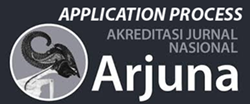Tax Avoidance in Relationship on Capital Intensity, Growth Opportunities, Financial Distress and Accounting Conservatism
DOI:
https://doi.org/10.59653/jbmed.v1i02.56Keywords:
tax avoidance, capital intensity, growth opportunities, financial distress, accounting conservatismAbstract
Tax avoidance is an act of legal tax avoidance, but in this case the state suffers losses from this action. There are several factors that affect tax avoidance including capital intensity, growth opportunities, financial distress, and accounting conservatism. This type of research uses quantitative research with company objects that are members of the Jakarta Islamic Index 70. Data sources use secondary data listed in the company's financial reports for the 2018-2021 period. A total of 105 research data were tested using the SPSS version 25 application. The test results showed that only capital intensity had a negative and significant effect on tax avoidance, while other variables had no effect on tax avoidance. The test results show that tax avoidance tends to be influenced by factors that affect cost reduction.
Downloads
References
Adityamurti, E., & Ghozali, I. (2017). PENGARUH PENGHINDARAN PAJAK DAN BIAYA AGENSI TERHADAP NILAI PERUSAHAAN Enggar Adityamurti, Imam Ghozali 1. Diponegoro Journal of Accounting, 6, No 3(2010), 1–12.
Amidu, M., Coffie, W., & Acquah, P. (2019). Transfer pricing, earnings management and tax avoidance of firms in Ghana. Journal of Financial Crime, 26(1), 235–259. https://doi.org/10.1108/JFC-10-2017-0091
Amiram, D., Bauer, A. M., & Frank, M. M. (2019). Tax Avoidance at Public Corporations Driven by Shareholder Taxes: Evidence from Changes in Dividend Tax Policy. The Accounting Review, 94(5), 27–55.
Andani, M., & Nurhayati, N. (2021). Pengaruh Ukuran Perusahan, Financial Distress, Resiko Litigasi Terhadap Konservatisme Akuntansi. Jurnal Ekonomi Dan Bisnis, 14(1), 206–224.
Andreas, H. H., Ekonomika, F., Kristen, U., Wacana, S., Ekonomika, F., Kristen, U., & Wacana, S. (2017). KONSERVATISME AKUNTANSI DI INDONESIA. 20(1), 1–22.
Ardillah, K., & Halim, Y. (2022). The Effect of Institutional Ownership , Fiscal Loss Compensation , and Accounting Conservatism on Tax Avoidance. Journal of Accounting Auditing and Business, 5(1), 1–15. https://jurnal.unpad.ac.id/jaab/article/view/37310
Aurillya, S., Ulupui, I. G. K. A., Khairunnisa, H. (2020). PENGARUH GROWTH OPPORTUNITIES, INTENSITAS MODAL, DAN DEBT COVENANT. Jurnal Akuntansi, Perpajakan Dan Auditing, 2(3), 600–621.
Dang, V. C., & Tran, X. H. (2021). The impact of financial distress on tax avoidance: An empirical analysis of the Vietnamese listed companies. Cogent Business and Management, 8(1). https://doi.org/10.1080/23311975.2021.1953678
Dwihartanti, A., Pratiwi, Putri, A., & Indrswono, C. (2021). Pengaruh Kepemilikan Institusional, Intensitas Modal Dan Intensitas Persaingan Terhadap Agresivitas Pajak. November.
Ependi, H. (2020). Pengaruh Sales Growth, Profitabilitas, Leverage,Ukuran Perusahaan, Konservatisme Akuntansi,Intensitas Asset Tetap, Corporate Governance,Terhadap Tax Avoidance Terhadap Perusahaan Bumn Yang Terdaftar Di Bei Focus Terhadap Perusahaan Jasa Keuangan Dan As. Jurnal Prisma (Platform Riset Mahasiswa Akuntansi), 1(1), 79–85. https://ojs.stiesa.ac.id/index.php/prisma
Fauzan, Arsanti, P. M. D., & Fatchan, I. N. (2021). The Effect of Financial Distress, Good Corporate Governance, and Institutional Ownership on Tax Avoidance (Empirical Study of Manufacturing Companies in the Consumer Goods Industry Sector Listed on the Indonesia Stock Exchange for the 2016-2019 Period). JURNAL Riset Akuntansi Dan Keuangan Indonesia, 6(2), 154–165. https://journals.ums.ac.id/index.php/reaksi/article/view/16126
Fitriani, A., & Ruchjana, E. T. (2020). Pengaruh Financial Distress dan Leverage terhadap Konservatisme Akuntansi pada Perusahaan Retail di Indonesia. Jurnal Ekonomi Manajemen Akuntansi, 16(2), 82–93.
Hakim, M. Z. (2017). Determinan Konservatisme Akuntansi Pada Industri Dasar Dan Kimia Periode 2012 - 2014. COMPETITIVE Jurnal Akuntansi Dan Keuangan, 1(1), 111. https://doi.org/10.31000/competitive.v1i1.110
Hardiyanti, F., Azmi, Z., & Ahyarudin, M. (2022). THE EFFECT OF DEBT COVENANT, LEVERAGE, GROWTH OPPORTUNITIES AND FINANCIAL DISTRESS ON ACCOUNTING CONSERVATISM. Jurnal Ilmiah Akuntansi, 6(8.5.2017), 2003–2005.
Hasan, M. M., Al-Hadi, A., Taylor, G., & Richardson, G. (2017). Does a Firm’s Life Cycle Explain its Propensity to Engage in Corporate Tax Avoidance? Europan Accounting Review, 26(3), 469–501.
Herry. (2017). Kajian Riset Akuntansi. PT Grasindo, Jakarta.
Hertina, N. R., & Zulaikha. (2017). Analisis Penerapan Konservatisme Akuntansi Di Indonesia Dalam Perspektif Positive Accounting Theory. Diponegoro Journal of Accounting, 6(3), 1–10.
Hotimah, H. H. H., & Retnani, E. D. (2018). Pengaruh Kepemilikan Manajerial Ukuran Perusahaan, Rasio Leverage, Intensitas Modal terhadap Konservatisme Akuntansi. Jurnal Ilmu Dan Riset Akuntansi , Vol .7, Nomor 10.e-ISSN : 2460-0585, 7(10), 1–19.
Jingga, V., & Lina, L. (2017). Factors Influencing Tax Avoidance Activity: An Empirical Study from Indonesia Stock Exchange. Indian-Pacific Journal of Accounting and Finance, 1(1), 17–25. https://doi.org/10.52962/ipjaf.2017.1.1.3
Jumailah, V. (2020). Pengaruh Thin Capitalization dan Konservatisme Akuntansi terhadap Tax Avoidance dengan Kepemilikan Institusional sebagai Variabel Moderasi. Management & Accounting Expose, 3(1), 13–21. https://doi.org/10.36441/mae.v3i1.132
Kompas. (2020). Jejak Hitam PT. Hanson Internasional, Manipulasi Laporan Keuangan 2016.
Loen, M. (2021). PENGARUH FINANCIAL DISTRESS DAN LEVERAGE TERHADAP KONSERVATISME AKUNTANSI PADA PERUSAHAAN MANUFAKTUR SEKTOR INDUSTRI BARANG KONSUMSI YANG TERDAFTAR DI BURSA EFEK INDONESIA PERIODE 2016 – 2019. Jurnal Akuntansi Dan Bisnis Krisnadwipayana, 8(2).
Manika, F., Ab, A., & Kusmayadi, I. (2017). ANALISIS FINANCIAL DISTRESS PERUSAHAAN SEMEN DI BEI PERIODE 2011-2015. Jurnal Ilmu Manajemen Dan Bisnis, 5(2), 24.
Mitnick, B. M. (2015). Agency Theory. Wiley Encyclopedia of Management, 1–6. https://doi.org/10.1002/9781118785317.weom020097
Mukhid, D. A. (2021). Metodologi Penelitian Pendekatan Kuantitatif. CV. Jakad Media Publishing.
Nadhifah, M., & Arif, A. (2020). Transfer Pricing, Thin Capitalization, Financial Distress, Earning Management, dan Capital Intensity Terhadap Tax Avoidance Dimoderasi oleh Sales Growth. Jurnal Magister Akuntansi Trisakti, 7(2), 145–170. https://doi.org/10.25105/jmat.v7i2.7731
Ningsih, A. N. (2020). Aset Tetap Dan Konservatisme Akuntansi Terhadap Tax Avoidance. EkoPreneur, 1(2), 245–256.
Noviani, I., & Homan, H. S. (2021). Pengaruh Debt Covenant dan Growth Opportunities Terhadap Konservatiame Akuntansi (Studi pada Perusahaan Manufaktur yang Terdaftar di Bursa Efek Indonesia Periode 2013-2017). Jurnal Riset Akuntansi Dan Perbankan, 15(2), 577–596.
Nuryeni, S., & Hidayati, W. N. (2021). Pengaruh Konservatisme Akuntansi, Capital Intensity dan Financial Distress Terhadap Tax Avoidance. SAKUNTALA Prosiding Sarjana Akuntansi Tugas Akhir Secara Berkala, 1(1), 548–570. http://openjournal.unpam.ac.id/index.php/SAKUNTALA
Pahriyani, R. A., & Aisah, A. N. (2020). Pengaruh Ukuran Perusahaan, Leverage, Dan Financial Distressterhadap Konservatisme Akuntansi Pada Perusahaan Manufaktur Industri Barang Dan Konsumsi Yang Terdaftar Di Bursa Efek Indonesia. Jurnal Manajemen Dan Akuntansi, 21(2), 40–50.
Pangestu, S. H., & Pratomo, D. (2020). Capital Intensity Terhadap Tax Avoidance Dengan Profitabilitas, Size Dan Leverage Sebagai Variabel Kontrol. Jurnal Akuntansi Dan Ekonomi, Vol. 5, 26–34. https://doi.org/10.29407/jae.v5i3.14182
Paramita, R. W. D., Rizal, N., & Sulistyan, R. B. (2021). Metode Penelitian Kuantitatif (Ketiga). WIDYA GAMA PRESS.
Pattiasina, V., Tammubua, M. H., Numberi, A., Patiran, A., & Temalagi, S. (2019). Capital Intensity and tax avoidance. International Journal of Social Sciences and Humanities, 3(1), 58–71. https://doi.org/10.29332/ijssh.v3n1.250
Primadani, N. M. L., & Ariasih, N. K. (2021). Rancang Bangun Sistem Prediksi Financial Distress Menggunakan Metode Altman Z-Score Modifikasi Pada Koperasi XYZ. INFORMAL: Informatics Journal, 6(2), 72. https://doi.org/10.19184/isj.v6i2.23710
Priyono, M. Y. V., & Suhartini, D. (2022). PENGARUH FIRM SIZE, CASH FLOW, LEVERAGE, GROWTH OPPORTUNITY, DAN PROFITABILITY TERHADAP KONSERVATISME AKUNTANSI. JAMBURA ECONOMIC EDUCATION JOURNAL, 4(1), 51–65.
Raflis, R., & Arita, E. (2021). Impak Struktur Modal, Struktur Kepemilikkan dan Karakteristik Perusahaan Terhadap Financial Distress dan Financial Health Perusahaan. Jurnal Ekonomi Dan Bisnis Dharma Andalas, 23(1), 135–149. https://doi.org/10.47233/jebd.v23i1.199
Rahayu, S. K. (2020). Perpajakan Konsep, Sistem dan Implementasi Edisi Revisi. Rekayasa Sains.
Rini Tri Hastuti, R. N. W. (2020). Pengaruh Kepemilikan Manajerial, Tingkat Hutang Dan Growth Opportunities Terhadap Konservatisme Akuntansi. Jurnal Paradigma Akuntansi, 2(3), 1130. https://doi.org/10.24912/jpa.v2i3.9539
Saputra, J., & Purwatiningsih. (2022). Pengaruh pertumbuhan penjualan, konservatisme akuntansi, dan kompensasi rugi fiskal terhadap tax avoidance. Scientific Journal Of Reflectiion, 5(4), 951–960.
Saputri, F. A. (2018). PENGARUH PROFITABILITAS, LEVERAGE, INTENSITAS MODAL DAN PROPORSI DEWAN KOMISARIS INDEPENDEN TERHADAP TAX AVOIDANCE. Jurnal Ekobis Dewantara, 1(6), 171–180.
Savitri, E. (2016). Konservatisme Akuntansi: Cara Pengukuran, Tinjauan Empiris dan Faktor-Faktor yang Mempengaruhinya. In Musfialdi (Ed.), Konservatisme Akuntansi: Cara Pengukuran, Tinjauan Empiris dan Faktor-Faktor yang Mempengaruhinya. PUSTAKA SAHILA YOGYAKARTA.
Shaheen, S., & Malik, Q. A. (2019). The Impact of Capital Intensity , Size of Firm And Profitability on Debt Financing In Textile Industry of Pakistan The Impact of Capital Intensity , Size of Firm And Profitability on Debt Financing In Textile Industry of Pakistan Sadia Shaheen ( Principal. Interdisciplinary Journal of Contemporary Research in Business, 3(10).
Sjahputra, A. (2019). Determinan Tax Avoidance Pada Perusahaan Food and Beverages Di Indonesia. SCIENTIFIC JOURNAL OF REFLECTION: Economic, Accounting, Management and Business, 2(4), 371–380. https://doi.org/10.5281/zenodo.3472234
Tilehnouei, M. H., Esfahani, S. T., & Soltanipanah, S. (2018). Investigating the Effect of Financial Distress on Tax Avoidance during the Global Financial Crisis in Companies Listed on Tehran Stock Exchange. International Journal of Finance and Managerial Accounting, 3(9), 41–51. https://www.researchgate.net/publication/327366938
Ursula, E. A., & Vitta Adhivinna, V. (2018). PENGARUH KEPEMILIKAN MANAJERIAL UKURAN PERUSAHAAN, LEVERAGE, DAN GROWTH OPPORTUNITIES TERHADAP KONSERVATISME AKUNTANSI. Jurnal Akuntansi, 6(2).
Yahya, A., Agustin, E. G., & Nurastuti, P. (2022). Firm Size, Capital Intensity dan Inventory Intensity terhadap Agresivitas Pajak. Jurnal Eksplorasi Akuntansi (JEA), 4(3), 574–588.
Yahya, A., Permatasari, M. D., Hidayat, T., Fahruroji, M., Bangsa, U. P., & Akuntansi, P. S. (2021). Tax Avoidance : Good Corporate Governance dan Kualitas Audit. 15(02), 95–105.
Downloads
Published
How to Cite
Issue
Section
License
Copyright (c) 2023 Adibah Yahya, Neng Asiah, Rina Nurjanah

This work is licensed under a Creative Commons Attribution-ShareAlike 4.0 International License.
Authors who publish with this journal agree to the following terms:
- Authors retain copyright and grant the journal right of first publication with the work simultaneously licensed under a Creative Commons Attribution-ShareAlike that allows others to share the work with an acknowledgement of the work's authorship and initial publication in this journal.
- Authors are able to enter into separate, additional contractual arrangements for the non-exclusive distribution of the journal's published version of the work (e.g., post it to an institutional repository or publish it in a book), with an acknowledgement of its initial publication in this journal.
- Authors are permitted and encouraged to post their work online (e.g., in institutional repositories or on their website) prior to and during the submission process, as it can lead to productive exchanges, as well as earlier and greater citation of published work (See The Effect of Open Access).





























